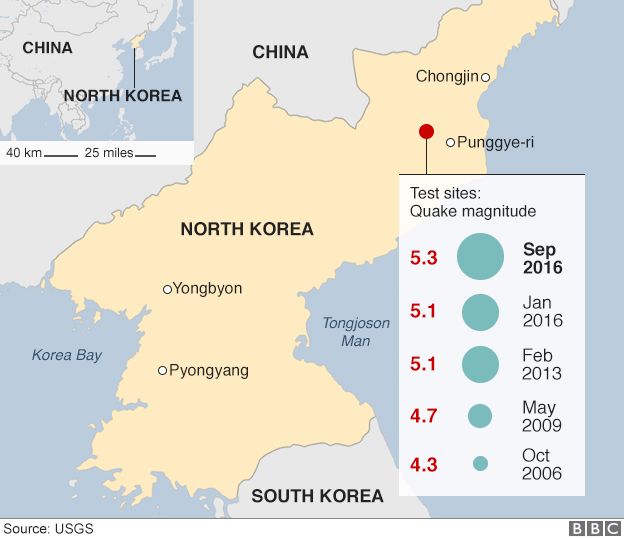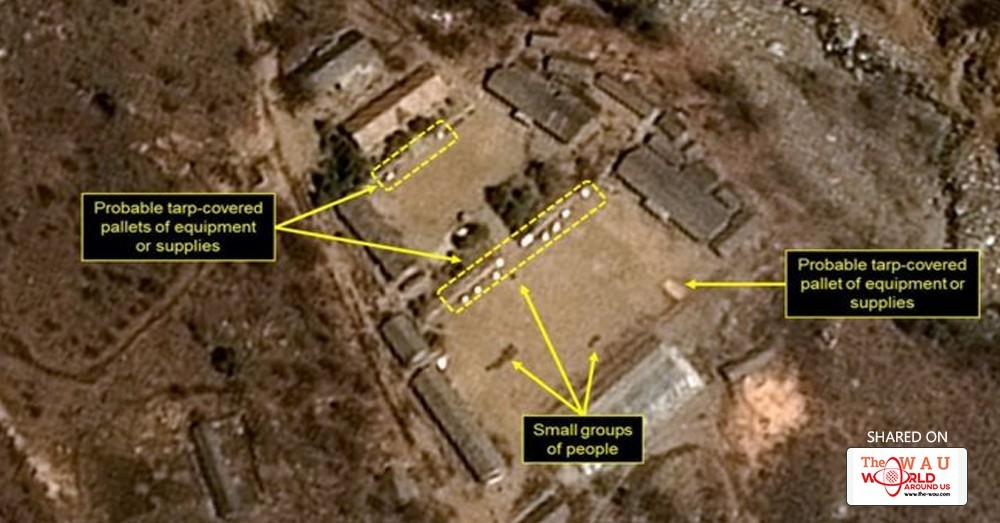A large earth tremor has been detected in North Korea, raising speculation that the country has carried out its sixth nuclear test.
US seismologists said the 6.3 magnitude quake in the north-east of the country was a "possible explosion".
It is in the area where the North has conducted previous nuclear tests.
The tremor comes hours after North Korean leader Kim Jong-un was pictured with what state media said was a new type of hydrogen bomb.
State media said the device could be loaded on to a ballistic missile. Neither claim could be independently verified.
South Korea officials said the quake took place in Kilju County, where the North's Punggye-ri nuclear test site is situated.
The South's military chiefs said the North was "presumed" to have conducted a nuclear test.
China's Earthquake Administration described the tremor as a "suspected explosion". It said it had detected a second tremor, just after the first, of 4.6 magnitude which it termed as "a collapse".
Initial reports from the US Geological Survey put the tremor at 5.6 magnitude with a depth of 10km (six miles) but this was later upgraded to 6.3 magnitude at 0km. If confirmed, it will be the North's most powerful nuclear test to date.
North Korea carried out its last nuclear test in September 2016. It has defied UN sanctions and international pressure to develop nuclear weapons and to test missiles which could potentially reach the mainland US.
A series of recent missile tests has caused growing international unease.
In a report on Sunday, the North's state news agency KCNA said Kim Jong-un had visited scientists at the nuclear weapons institute and "guided the work for nuclear weaponisation".

The institute recently succeeded in making a more developed nuke," the report said, adding: "He (Kim Jong-un) watched an H-bomb to be loaded into a new ICBM (intercontinental ballistic missile)."
The report carried pictures of the leader inspecting the device. It described the weapon as "a multi-functional thermonuclear nuke with great destructive power which can be detonated even at high altitudes".
International experts say the North has made advances in its nuclear weapons capabilities but it is unclear if it has successfully miniaturised a nuclear weapon it can load on to a missile.
The North has previously claimed to have miniaturised a nuclear weapon but experts have cast doubt on this. There is also scepticism about the North's claims to have developed a hydrogen bomb, which is more powerful than an atomic bomb.
Hydrogen bombs use fusion - the merging of atoms - to unleash huge amounts of energy, whereas atomic bombs use nuclear fission, or the splitting of atoms.

Share This Post















